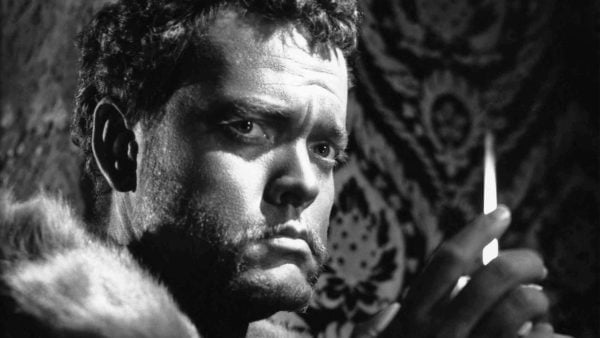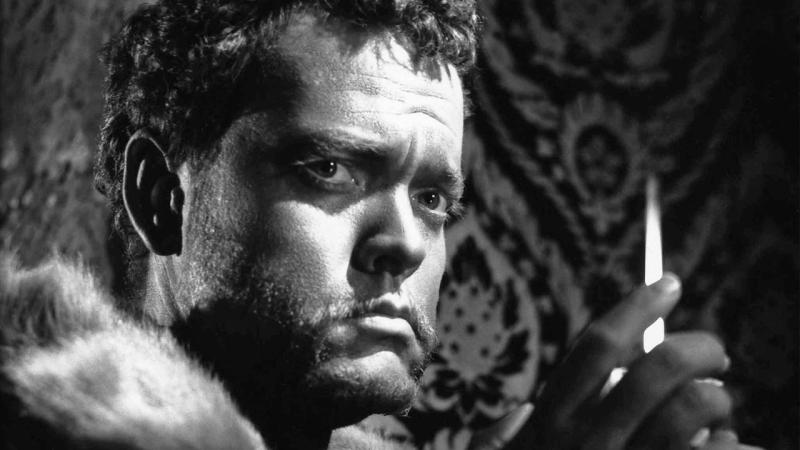
A romantic legend surrounds the career of Orson Welles. According to this myth, Welles was a wunderkind, who rose to national prominence in the 1930s with his innovative theatrical and radio productions. Then, he moved to Hollywood, and in 1941, at the age of 26, he made “Citizen Kane.” While “Citizen Kane” is often considered to be the greatest film ever made, the propagators of this legend state that Welles’s later Hollywood productions were failures. By the end of the 1940s, unable to find work in Hollywood, he was forced to go abroad to Europe, where he spent much of his career languishing in obscurity. Critics used to query, “Whatever happened to Orson Welles?”
The answer to this question is that he continued making masterpieces. The first film that Welles completed in Europe was his 1951 adaptation of William Shakespeare’s “Othello.” Although Shakespeare describes the “pomp and circumstance of glorious war” in “Othello,” Welles’s film has very little of the pageantry that features in other filmmakers’ Shakespeare adaptations. This choice may have been dictated by the circumstances of the film’s production. Welles shot “Othello” intermittently for three years. Finally, when he could not find more money to keep filming, he edited the footage he had together. Yet, “pomp and circumstance” also seems antithetical to Welles’s artistic vision. He cuts Shakespeare’s work down to 93 minutes, removing the ribald humor and superfluous subplots. While his actors are costumed in Elizabethan attire, Welles brings this timeless drama of jealousy and deceit into sharp focus. He creates an “Othello” that is stark and unexpectedly moving.
Shakespeare’s “Othello” opens with a lengthy conversation between Rodrigo, a Venetian nobleman, and Iago, a soldier, about Desdemona’s marriage to Othello, the titular Moor of Venice. Welles dispenses with the bulk of conversation. In a voice-over, he explains the events that have happened before the start of the play and begins with Iago’s frank admission, “I hate the Moor.” Indeed, Iago’s hate for Othello sets the play’s plot in motion. Iago is bitter because Othello has promoted another soldier, Cassio, to lieutenant, while he remains Othello’s ensign and confidant. Vengefully, Iago asserts that Desdemona and Cassio are having an affair. Othello gradually comes to believe him. He promotes Iago to lieutenant and resolves to punish his wife.
Welles realizes that the tragedy of the play derives from Iago’s lies and Othello’s unquestioning acceptance of them as truth, and he uses his mastery of cinematic techniques to draw attention to this simple fact. The scene in which Iago first suggests to Othello that his wife is unfaithful is crucial to the play. Welles uses one long take to show how Iago makes these accusations and how Othello reacts to them. The long take allows us to pay careful attention to the rapport between these two characters and focus on Shakespeare’s complex language. Welles ends the take just as Iago speaks of his good reputation and cautions Othello to beware “the green-eyed monster” of jealousy. The abrupt cut Welles makes here allows us to appreciate the irony of this moment. Jealousy of Cassio is driving Iago’s actions, and so he is hardly someone who can give this advice.
Because Welles endeavors to tell the story both verbally and visually, I suspect that this Shakespeare adaptation is easier to follow than others and is more accessible to viewers unfamiliar with the play. He leaves little doubt that private matters of fidelity and love are central to this drama. He contrasts the sunny Mediterranean exteriors with the murky palace interiors. Othello and Desdemona’s bedroom is especially ensconced in shadow. As he becomes more and more convinced that Desdemona is unfaithful, Othello becomes more and more isolated from her and from anybody who attempts to speak the truth. In these later parts of the film, Welles shows Othello standing alone, filling the entire frame. During his soliloquies, Welles focuses on his tortured face.
Taken together, Welles’s choices emphasize the profound tragedy of the play. The disintegration of Othello and Desdemona’s relationship is painful to watch, and Iago emerges not only as a cruel man but also as a destructive force. Welles’s film has a raw, emotional power, even if it is fairly easy to find fault with his choices. A viewer could admonish Welles for not concentrating more on the racial elements of the story or the role of women in the world of the play. While the acting is uniformly good, there may be versions of “Othello” that feature more polished performances. Yet, no other version of “Othello” has moved me as much as Welles’s did. Watching it, I realized that “Othello” is not just a great play with many quotable lines but also a great story, filled with pathos.
Storytelling is discussed often in “Othello.” Othello is a storyteller, and he says he wooed Desdemona by telling her stories of his youth. Iago is also a storyteller as he weaves his intricate web of lies. On another level, Shakespeare joins Othello and Iago’s stories together and creates a tragedy. Then, there is Welles, a storyteller who uses his modern cinematic techniques to breathe new life into this old classic.
Contact Amir Abou-Jaoude at amir2 ‘at’ stanford.edu.
